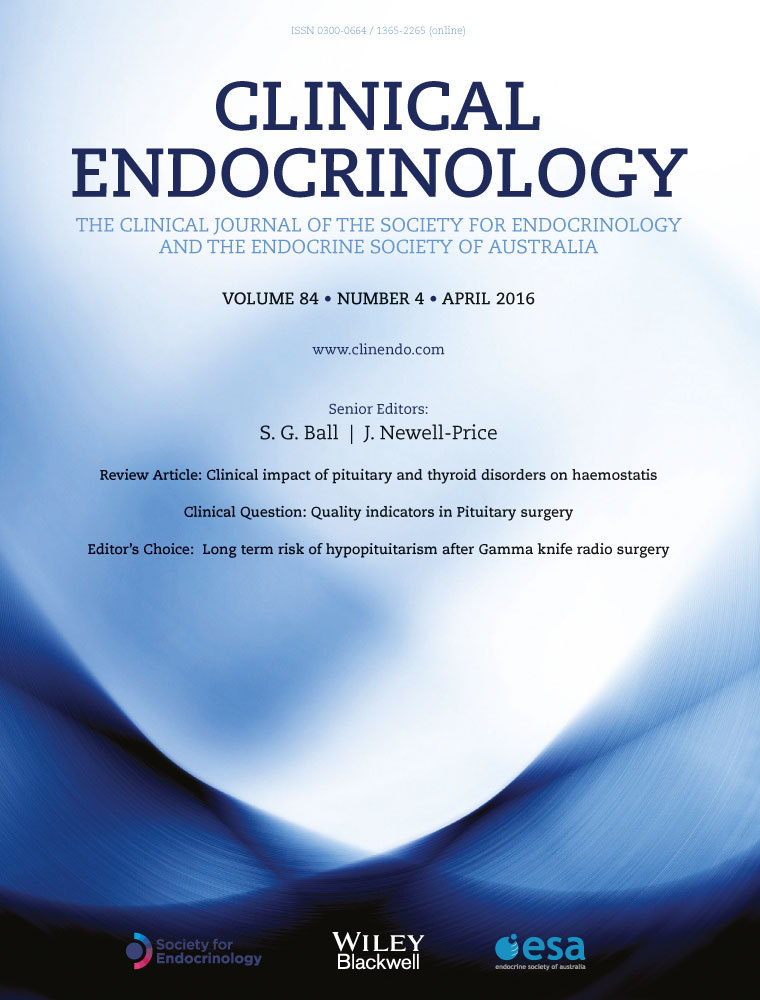Long-term treatment with pegvisomant for acromegaly: a 10-year experience
Summary
Background
Efficacy of the GH-receptor antagonist pegvisomant (PEG) has differed between preclinical and observational studies mainly due to dose adjustment and IGF-I normalization criteria. An escape phenomenon has also been described, but its definition and underlying causes have not been fully established.
Objective
To re-evaluate the outcomes of long-term PEG in a series of previously published patients and analyse the escape phenomenon.
Methods
We reviewed all patients with acromegaly resistant to SSA in whom PEG was started as monotherapy, who had been included in a previous publication. We prospectively evaluated 64 (56·3% women) from six tertiary care referral hospitals in Spain, for whom data as of June 2014 were available. Escape to PEG was defined as confirmed loss of biochemical control (IGF-I >1·2xULN), after at least 6 months of previous control with a stable dose of PEG.
Results
Patients were followed up for 13·0 (5·9–34·8) years since diagnosis, and 9·0 (4·1–10·4) years since the first administration of PEG. Fifty-one (89·5%) patients had an adequate IGF-I control at the last follow-up visit, 9 of them without treatment. Tumour growth was reported in 6 of 64 cases (9·4%), none of whom had received prior radiotherapy (P = 0·011). Seven patients died during follow-up. We found 16 escapes in 10 patients (15·6%). We identified potential underlying causes in 9 cases (tumour regrowth, previous treatment modifications, concomitant menopause and change in testosterone administration). The reason was unknown in 7 escapes, which occurred in 6 patients (9·4%). All patients, except one, achieved subsequent biochemical control after treatment adjustment.
Conclusions
We reassure the efficacy and safety of long-term PEG. An escape phenomenon may occur, but it can be overcome by adjusting therapy.




